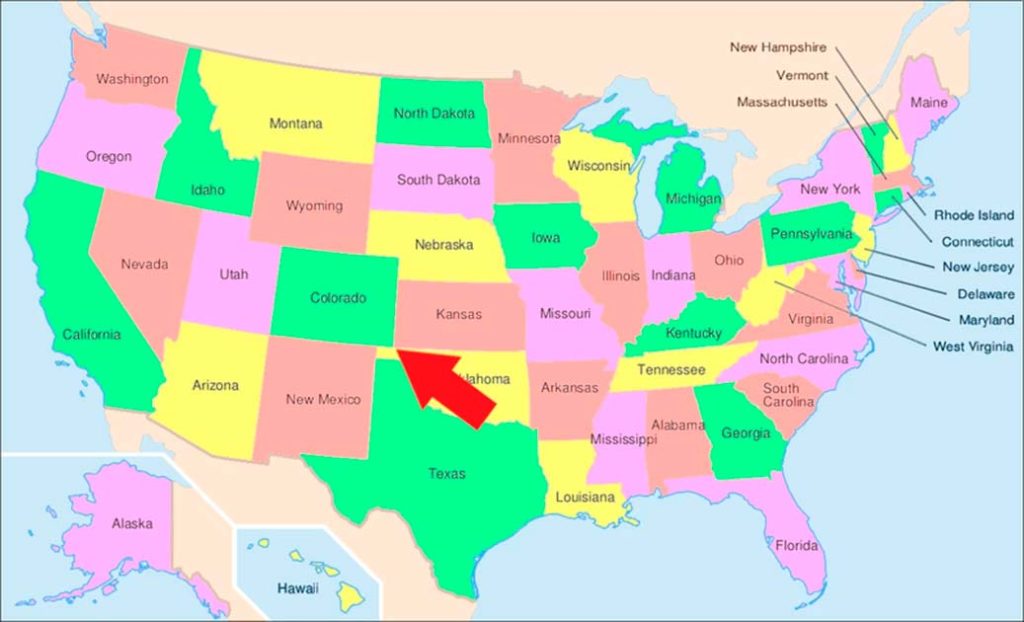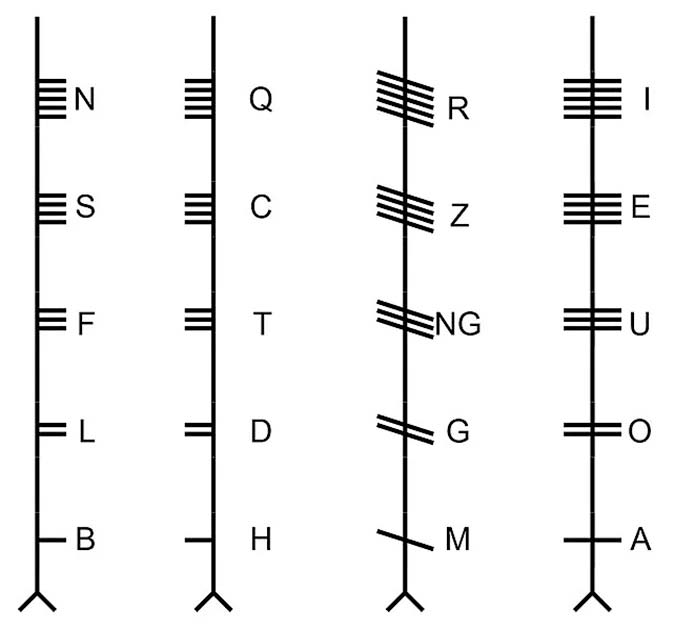The Anubis Caves are a site situated in the Oklahoma Panhandle, in the far west of the state. These strange caves, and what has been found in them, are seen by some as one of the most significant examples of “Old World” contact in the “New World”.
If the contents of the caves are what they seem to be, this is evidence that people from Europe and other continents made it to the Americas before Columbus did. The myths and epigraphs inscribed within the cave reveal an interwoven and quite elaborate chart, a tool calibrated for the sun’s equinox.
Phrases have been found within that resemble Celtic sayings but written in Ogam and Libyan scripts. The scripts mention Bel and Grian, the Celtic gods of the sun. As well as this, the cult of Mithras, extremely popular in Rome and the Persian Empire, has been found in these caves.
Discovery and Controversy
In 1978 Gloria Farley was shown the caves by a local farmer. She recognized a dog-like figure as the Egyptian jackal-god, Anubis. This is how they got their name, but in truth there are far more things lining the walls of the cave than that.
A Harvard professor of zoology named Barry Fell took responsibility for translating the inscriptions. He translated the sun symbols and the orientation of the cave as well as some of the inscriptions as being aligned with the sun at its equinox.
The placement of the symbols was of particular interest, creating an interworking play of light and shadow with the cave’s confines. A later study confirmed that these assisted with astronomical alignments which could be seen within the caves.

This work led to instant fame for the caves and a a thorough treatment of the site. It was investigated by archaeo-astronomists, cosmologists and mythologists.
A documentary was filmed in the 1980s by Scott Monahan called the History of the Rocks which looked at the major features and changes to the caves. A new documentary has since been created in the 2000s called Old News.
- What are the Inscriptions on the Dighton Rock, and Who Wrote Them?
- The Mystery of Cave Paintings: Early Animation?
Phillip Leonard has since taken over research and has done so for over 25 years. He has worked with William McGlone to co-author many papers on the subjects of ancient American petroglyphs and inscriptions. The most recent research was titled “A New World Monument to Mithras”. Monahan and Leonard are some of the few researchers continuing to research the caves.
Mithras
The sun god Mitra and Varuna, his partner were worshiped in India from around 2,000 BC. The worship spread throughout Asia Minor and Persia though his name was adapted to Mithra. Later, the Romans adopted Mithra under the guise of Mithras and he proved to be very popular to the Roman soldiers.

The worship of Mithras continued to spread through the Roman Empire and made it to the Celtic peoples of Britain and the Iberian Peninsula. It was during this period that the cult of Mithras became associated with his killing of the bull.
Interestingly, in the Anubis Caves, no sign of the killing of the bull is visible. If true, this would imply that the cave inscriptions occurred before the cult of Mithras became fascinated with the bull slaying. This would make the inscriptions millennia old.
Mithraism is known as religion of mystery in the Roman Empire, but it was much more popular in Persia. The cult spread across Europe and Asia with earlier forms and traditions as well as the Roman incarnation.
This is why Mithras is also referred to as Bel and Grain in the Anubis Caves. It is likely that in earlier times he would have been referred to as Bel, Apollo, Perseus, or Lugh.
The Inscriptions
The inscriptions found within the cave are written in Ogam. This was a writing system that used script arranged from parallel lines in groups to present letters. This particular system was quite prevalent in the first millennium AD within the British Isles.
Ogam can be used to write any language, but it seems to be mostly associated with Celtic languages. Many examples exist across Ireland and England. Though it should be noted that some have been found in Iberia and in Africa. Its existence in Ogam presents some difficulties and issues between archaeologists and researchers.
Professional archaeologists have dismissed the Ogam present in the caves as meaning anything. However, some see the inscriptions as part of a trend that can be found across southeastern Colorado, that presents compelling evidence that this language existed in the “New World” long before Columbus landed on those shores.
- Yamashita Gold: The Philippine Treasure Caves
- Dare You Enter the Ploutonion? Gateway to the Underworld at Hierapolis
In five of the caves, Ogam inscriptions can be found. One such inscription, as translated by Fell in 1985, reads that “The Sun is Six Months in the North: In the South for the other months”. This inscription led to the conclusion by Polansky that the site was linked with the equinox.
Another inscription found in another cave, number 4, was interpretated to mean “The Sun Belongs to Bel”. This cavern on the day of the Equinox is consecrated for chanting or prayers to Bel. However, this inscription is not corroborated by other experts.
Along with this, writing interpreted as Libyan has been found near depictions of the Sun God which has been claimed to read “Enact at Sunset the rites of Bel”. Assembling at that hour in worship. Other inscriptions have been found but not interpreted.
A Rewriting of History?
Through researching the equinox and its reaction with the caves, major calendrical alignment has been seen. The sequence of alignments appears in Cave 3 most prominently. The two most famous alignments are the “Nose Pointer” and the “Pillar Balance”.
The “Nose Pointer” indicates the arrival of the equinox day when the shadow that looks like a human face reaches the relevant inscription. Then “Pillar Balance” alignment occurs on a natural stone pillar between caves 2 and 3.

There are inscriptions on the pillar that interact with the with the sun to create an alignment. There are 12 vertical lines that angle to a natural crack. Light arrives at the panel in the afternoon before sunset. Six lines exist on the left and six on the right representing the months of the year.
These caves may indicate that the “Old World” very much had a presence in the “New World” before Christopher Columbus and his European cohort arrived. These caves were likely used as equinox alignments to help to keep time and calendars. However, it also played a strong role in the civilization’s ancient mythology and cosmology.
Or, just possibly, the inscriptions are a combination of natural features, animal marks and modern graffiti, rendering the whole theory nonsense. Nobody can truly say for sure.
Top Image: Some believe that the inscriptions on the cave walls include a depiction of the Egyptian god Anubis. Source: Vladimir18 / Adobe Stock.
By Kurt Readman